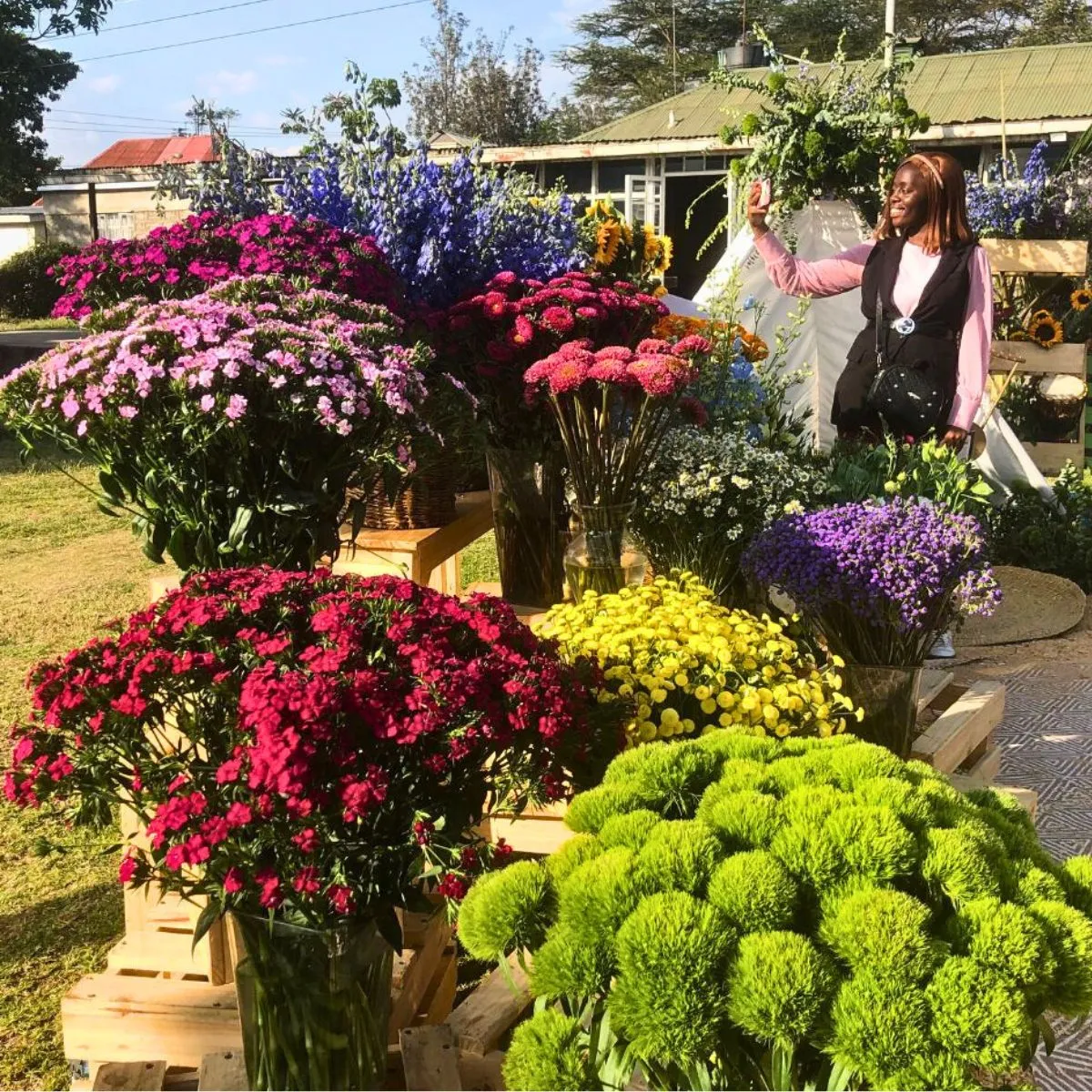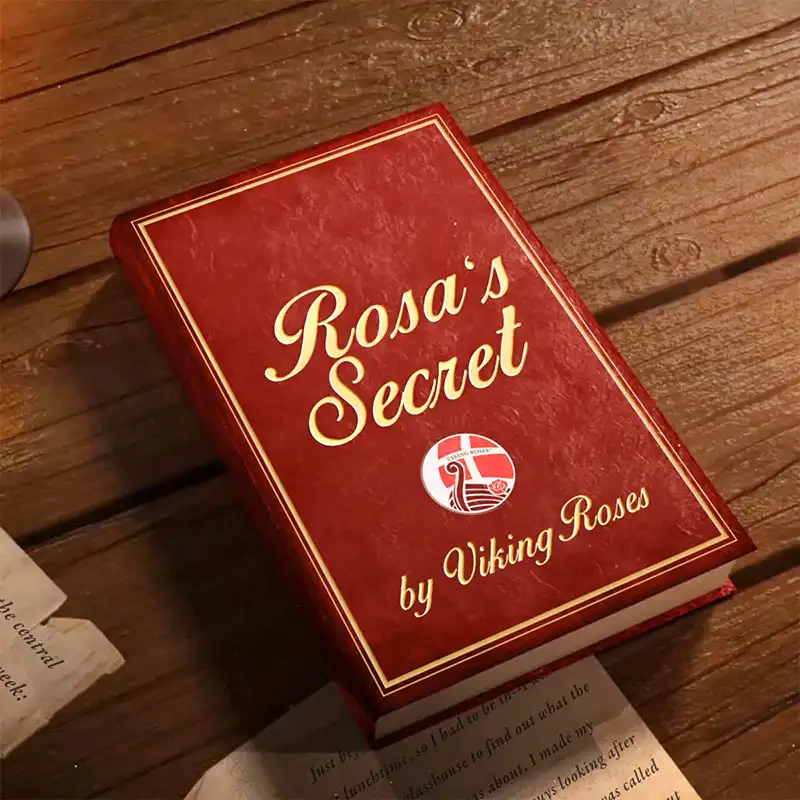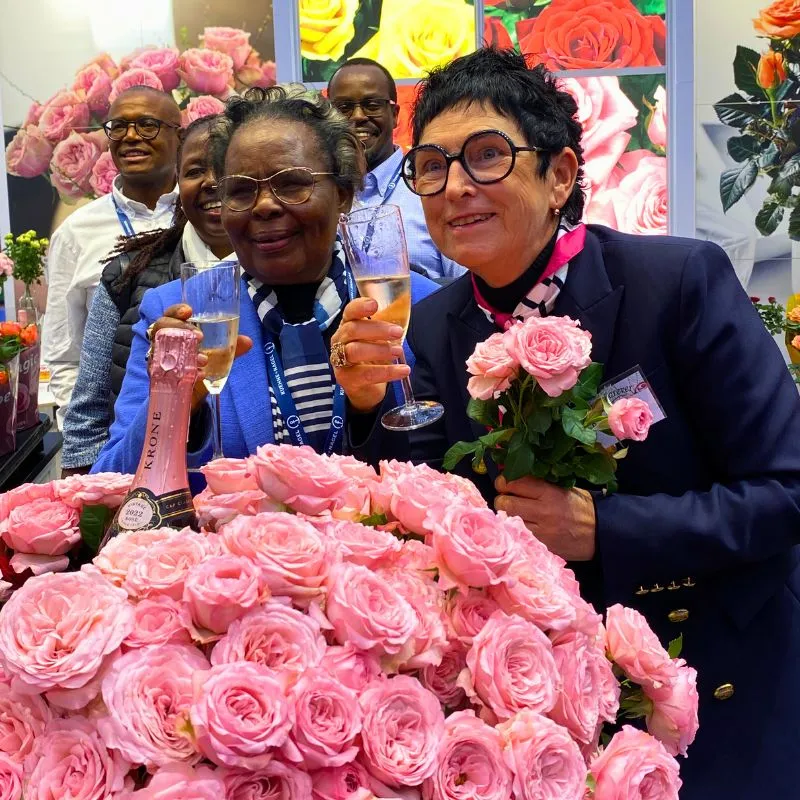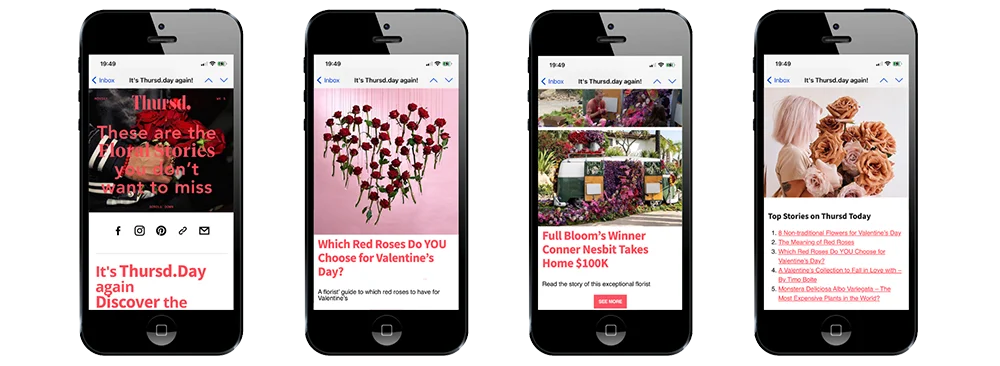The Witte de Wit train was going full speed ahead, from one station to another, far ahead of the competition and defying risks of derailment. Travelling had become a pleasant necessity rather than a succession of adventures. Contracts were revised, propagators were degraded from market leaders to service providers. New markets were tapped, and the Witte de Wit commercial team gradually expanded with it, driven by necessity rather than luxury.
Alex had taken over the photographing for the breeder’s rights and plant patent applications and had made his own photography cabinet. Norma was learning to fill out the various breeder’s rights and plant patent application forms and looking after the day-to-day communication with agents and subsidiaries. Maurice attended formal events, especially receptions and dinners and was aided by Teun Waterhuis for international finances.
Margaret, a ‘pot plant daughter’ who had managed Chrysal in South Africa, was hired as product manager for pot roses, working closely with our breeders and Camilla and Anders of Gartneriet Jensen in Denmark. Taking over the responsibility for North America would be next. In our struggle to regain the Danish market we had decided to show the pot rose producers there our serious intentions by flying them into Holland, introducing Margaret, touring them to pot rose propagator Rombouts, Anton’s Potrozen, lunch, Dutch competitor Tolina, to finish, to their big surprise, by opening up our breeding in Benthuizen and dropping them off at Schiphol airport in the evening. Afterwards, both Jorgen Stach and Camilla confirmed the Danes were taking Witte de With seriously again.
Concurrently, we had welcomed and said goodbye to Jan Noorderwijk as special project manager. Sjef had insisted to tap in the market of big, subsidized turn-key projects in especially India and had come up with Jan, a great charmer, who had lived and worked in the flower industry in Brazil. It turned out that Jan was very disorganized and had no idea how to put together business plans. I ended up writing a few proposals and subsequently also had to look after all the follow-ups. Jan agreed that this was not his cup of tea and returned to Brazil.
There was one incomprehensible incident during one board meeting—when I was not travelling, Anton, Sjef, Sep and I would meet on Friday mornings—when Sjef was irritated: he had been called by Peter Daimler, who had been angry with me. He did not understand about what.
I called Peter over his breakfast. “Peter, if there’s something that I did or said, please discuss it with me and don’t call Sjef behind my back!” “But John, I haven’t spoken to Sjef for a long time and then just to say hello. I have no idea what you’re talking about,” was his reply. I went to see Anton. “Don’t take it too seriously, Sjef has been very busy and was probably mixing things up.” During our next board meeting there was no clear answer. I was mad. “The reason why we sit here is to discuss what is going on in Witte de Wit! If there are things you disagree with, this is the place to talk about them. I would appreciate that! I also make mistakes.” I told Anton afterwards that I would not accept a next time.
When, like other breeders, we became aware of the significance of the Brazilian rose production, I planned a visit on the occasion of Hortitec 95 in Holambra. We hired Jan Noorderwijk to help organize and translate. No breeder’s rights, but a very good home market, so no exports to Europe, made this an interesting challenge. I had learned that there was a flower auction, growers of Dutch and Japanese origin and that of the former, Grupo Rog was the biggest, with different family members running the three farms totaling some 20 hectares, also at higher altitude. Jan made a program to start at the Holambra flower auction, then visit different farms for two days, ending with Grupo Rog. All were in the São Paulo area. The last day we would visit Hortitec and we had organized a dinner for Brazilian growers.
There had been a lot of copying going on in the Brazilian flower industry, in names (‘Veiling Holambra’), varieties (introductions at the Dutch auctions were grown in Brazil within half a year), production methods (Dutch and Japanese), lunch at ‘The Old Dutch’ (‘Restaurante Tipico Holandês’), houses in Holambra with the crochet curtains and miniature windmills in the gardens.
“Do you know the Brazilian carnival?” Renato of Veiling Holambra asked me in reply to my question about dominant colors. “That’s what Brazilians like: tropical, extravagant, intense colors.” The auction was set up a few years before, operating with simple means: two auctioneers with a microphone, extension cords, numbered seats and lamps. The wholesaler who would switch on their lamp first bought the buckets of flowers of the specific lot. Plans for more advanced copying of Aalsmeer and Naaldwijk depended on finances, but the Dutch settlers had also introduced the tradition of lean and mean. Although Renato could see the benefits of collaboration with breeders for his auction, his board, reflecting the attitude of the members, was averse.
Indeed, this was what we encountered during our farm visits. During the third visit, walking in the rose beds, I enquired what was wrong with breeders. “Don’t you want better varieties?” “You are only interested in money and want to make us pay even for varieties we don’t grow anymore, even though you don’t have any right to ask for money,” Jan translated for me and, after some more conversation, found out that Bernd Solf had visited two weeks prior. He had organized a meeting with the growers in which he banged his fist on the table and threatened to confiscate flowers if they were not going to pay the royalties they owed Von Bismarck. I understood why Big Anton would call Bernd a ‘real Mof’.
More visits and explicit reminders to the dinner I had invited them for. I also noticed they all self-propagated with cuttings and were not very successful in that. Half of the plants would die, leaving holes in the beds, needing to be filled up with plants of which again half did not survive.
The show was quite small, with our flowers arriving at the last minute. Sending them through Wijnedil Packaging in retrospect was not such a good idea. No time to hydrate, the flowers were put straight in the vases. They survived but looked battered and would only start to open after the show. Luckily, the Brazilians knew the varieties anyway.
The dinner was well-attended, food was good, drinks supported the friendly atmosphere. About time to speech. I would present a part in English, Jan would summarize in Portuguese, and so on. I had formed my ideas during the show and had written down a few keywords on a small piece of paper.
“First of all, thank you all for coming and, for those of you we visited, thank you for opening up your farms and teaching me about the Brazilian market. I’m impressed with the quality of your product and your very efficient Veiling Holambra. I think the Dutch auctions can learn something from you.”
“Witte de Wit believes in partnerships. A new variety is only a half product, needing the right professionals to make it into a beautiful product for which the end consumer is prepared to pay.”
“But it’s not just the half-product that we supply. With all the expertise and networks we have built up in all parts of the world we can offer more: all the savvy to grow a Witte de Wit variety, marketing ideas and contacts and more.” Jan looked puzzled at me at ‘savvy’. “All details that matter, from bending, first flush, fertilization, etc.”
“I see that you have issues in propagation, which is costing you production, extra labor, uneven growth. We will help you out there. We will send rootstocks and all necessary equipment to install a professional propagation facility, together with Kees Ent to set everything up and train people on ground.” Nods in the audience. Kees’s reputation as Bontekoe’s propagation expert was known to the Dutch expats.
“We will set it up and pass it on. We are breeders, not propagators.”
“I haven’t talked about royalties, have I? First, there is no breeder’s rights law in Brazil yet. It will not take too long, but today there is none. So formally, you don’t owe any royalties. Second, if you want to start a relationship, you look at the future. Of course, at some point you need to discuss the past, but this is no big hurdle once you have started to enjoy the fruits of collaboration.”
"Vamos brindar ao futuro!" were the last words of my notes.
Everybody happy. Not knowing how people would react, I had agreed with Grupo Rog not to mention that we would set up the propagation at one of their farms, together with the first official trials of our varieties. Awaiting further developments, nothing would be announced to other growers. A first step towards Witte de Wit Brazil. One step at a time, otherwise you run the risk of tearing your tights.
On the way back to Amsterdam, I realized that in a month I had been to different destinations on four continents: Sao Paolo, Johannesburg, Harare, Tel Aviv, Los Angeles, Fort Meyers, Barcelona (CIOPORA meetings always took place in interesting cities to ensure attendance) and Nice.
This last was maybe the most special. Besides visiting LAVAL, I drove to Monsieur Michel Kriloff, a small breeder whose varieties were marketed through LAVAL. The drive to Cap d’Antibes was spectacular and so was the view of the Mediterranean from his house and his small, downy infected and extremely hot greenhouse. We would do some selection first and after a while Monsieur Kriloff, witnessing my profuse sweating, asked if I wanted a drink. Absolutely. He returned with a cold bottle of champagne and two glasses. His flower colors became even more radiant and the varieties less thorny and quite a few were selected.
After the hard work we sat down in the house and Monsieur Kriloff told his life story. Born in Russia, fleeing to Estonia during the Russian Civil War, then, in the economic crisis, emigrating again, this time to France. At 18, he started an apprenticeship with Groupe Ferry, where he learned how to hybridize. In 1941 Groupe Ferry introduced his first variety, ‘Madame Horace de Carbuccia’, sold especially in Spain for some 30 years. In the meantime, he had joined the 39th Infantry Regiment, was decorated later, taken prisoner in Germany, where he was able to work in a rose garden until his release in 1945. He returned and set up his business in Cap d’Antibes, married his Maryse in 1953 and they had two daughters.
Somehow, Monsieur Kriloff reminded me of the Canadian Keith Laver, another unique character in the mythical world of roses.
I should cut down on the travelling, but still found every visit exciting. I never slept on the plane and used the time to work out notes and think about the next steps, people and challenges.
We had come to a point that everybody in the industry, producers, auctions, wholesalers, and even devoted florists knew the Witte de Wit varieties. We were strict in selection, about especially the vase life of a minimum of 14 days. ‘If it’s from Witte de Wit it must be good,’ was the general opinion in the industry. But then, the consumer didn’t know varieties. A red would always be the no longer existent ‘Baracca’.
The supply chain had become so fragmented and specialized, with transporters, consultants for light assimilation, consultants for biological control, consultants for production, logistic specialists, auctions, consultants for breeding, consultants for retail, organizations for promotion, … that everybody involved lost track of the divine purpose of the product: the joy of beauty. How could we make our varieties known to the end-user, the one we were all aiming for and who finally paid for the whole shebang?
Upon entering the office the next day, I found Maurice, Norma, Julia, Kees and Jan there. They wanted to hear about Brazil, but I enthusiastically announced “You know what? We’re going to set up a consumer brand to promote our varieties at the end of the chain!” I expected my animation returned, but instead “Oh no, John, not any more changes. We are still catching up with all other new activities.”
I realized that maybe I was going too fast, and moved to the expected topic, definitely not forgetting about the brand. Big Anton would like it. In fact, he had made me think about branding after we had visited Florinsa on Coto Paxi, Ecuador, and Klepper had taken us to “a very special greenhouse, the highest greenhouse of the world, at 3,500 meters.” Completely out of breath we had entered. I had never seen roses of this size and neither had Anton. For lack of oxygen, he could only speak a few words. “We should make this into a brand.” We never talked about it afterwards and at the time I had barely understood what he really meant.
Kees was delighted about setting up propagation in Brazil, although he didn’t really like the idea of delivering his propagation baby and then giving it up for adoption. “Remember we’re breeders, Kees, not propagators. This is a service to support our marketing.” Kees understood, was thrilled anyway, and instantly started making his shopping list.
The next Friday I put the branding idea on the table in our board meeting. Although we decided to do a brainstorm session at a later stage, both Anton and Sjef continued talking about the idea. We ended up racking our brains on the spot. Discussing the role of the product for the consumer, we decided to check the possibility of doing something with perfumes. Sjef wanted to involve the Aalsmeer auction, but that was for later consideration, since auction people tended to take over control, make it their project.
I asked my football teammate Gert-Jan, who owned two perfume shops, to give us a presentation and, as a left-winger, he went for it. One evening a week later we learned about the different brands and their markets. Fascinating. Fragrance, packaging, shop displays, and advertising all tuned to a specific consumer group. Mainly women of a certain age group and social class, but also aware of the men buying the product for their beloved.
We learnt about Chanel (‘No. 5’), Calvin Klein (‘Obsession’, ‘Eternity’), Yves Saint Laurent (‘Opium’) and some others. Great names for individual varieties. Then we came to Sabatini. Gert-Jan, well-prepared for his audience, kept this one for last.
Gert-Jan read from his notes: “The original Gabriela Sabatini is a crisp white floral/oriental fragrance combining aldehydes and citrus top notes, a bouquet of jasmine, honeysuckle, orange blossom and rose in the heart, and a base rich in vanilla, amber, sandalwood and musk.” The words ‘floral’ and ‘rose in the heart’ were convincing.
Perfume producers provided all kinds of merchandise for their products, but also detailed descriptions. For Sabatini, the German company of Mülhens, provided a very refined description of the brand and its market: “Sabatini perfumes project a confident yet approachable image: refined floral-orientals, aesthetically sleek packaging, and anchored in the celebrity lifestyle of a beloved tennis star. The fragrances are positioned as everyday luxury—modern, memorable, and widely admired for their femininity and freshness.”Gert-Jan had brought along some samples.

Maybe this was only a secondary motivation for his all-male audience from the sexist flower industry. Gabriela Sabatini, top 10 tennis player from Argentina, was a beauty that had already heated many rose hearts.

We thanked our perfume-winger with a big bouquet of roses and started our plan, called ‘GS-1’. What a match, ‘everyday luxury—modern, memorable, and widely admired for their femininity and freshness’, perfect!
- 🌹 How do we get in touch with Sabatini?
- 🌹 Do we have a first Sabatini rose?
- 🌹 Who will grow it?
- 🌹 How many stems do we need to start?
- 🌹 Where do we start?
- 🌹 Pricing? Royalties?
- 🌹 Involvement of the auction?
- 🌹 Professional advertising agency?
So far, we had worked with a small advertising company for our ads, pens, posters, and folders. We needed international experience in branding, within budget. After asking around and speaking to a few agencies, we decided on Normad Communicatie from Alphen aan den Rijn. Huib Stoop, director, was happy with our decision and ecstatic when I revealed our GS-1 plans.
The next day he was on the phone. His mother was a great tennis fan and had traced Sabatini’s manager in France. He had also been in touch with Mülhens in Cologne (of all places). They had already spoken about local joint promotions of florists with perfumeries and invited us to come to Germany.
With Seedy and Junior I discussed possible candidates for a first Sabatini. It should preferably be red, have a guaranteed opening and vase life of at least 16 days. The answer was quick and unanimous: “BCG-93015, a stone-red from J&P”. It had been planted in our trials in Nieuwveen. They didn’t know if it was flowering at the moment. I would call Piet Lek to find out.
Talking about a flying start. If Piet, Anton and Sjef would agree to our breeders’ choice, I would contact Robert de Biest of Bear Creek Gardens to try to obtain worldwide exclusivity.
Sjef explained that the auctions had all data that we needed: flower consumption per country, consumer prices, florists, etc. We had a meeting with two marketing managers of the Aalsmeer auction, Frans van Dijk and Karel Smedinga. They would collect data and make a marketing plan. They would also come up with the names of the 10 best growers in Holland that we would invite to present our plan and see if they could be persuaded to plant GS-1.
It took Robert de Biest a quick telephone call with his R&D director Keith Bartram to grant us world exclusivity for BCG-90028 if we would pay them their 50% of the regular royalty collected per plant. They didn’t want to get involved in the branding side. Perfect.
A few weeks later the top of the Dutch rose industry gathered in a meeting room of the Aalsmeer auction: the three Tulp and three Groeneveld brothers, Sjaak van der Tak with two sons, Aad van der Berg and his son, and Cor Zoutbier and Max Oudijk, owners of Zoutbier Rozen. Without exception they all agreed to plant 1 hectare each. I was nearly shocked by their confidence in Witte de Wit. The involvement of the auction must have contributed to this unanimous leap of faith. 10 Hectares, wow! With the Aalsmeer boys we had figured out that this would get us going in the home market, with room for expansion into Germany when the plants would give more production.
Kees and Snuf would also be involved with Dutch growers and Jan wanted to join marketing, having no clue, but very eager to learn.
Since no agreement had been concluded with Gabriela Sabatini yet, we continued to refer to the brand as ‘GS-1’.
On my first day at Witte de Wit I found myself in suit and tie in Uncle Piet’s Mercedes to Strasbourg. A year ago I was treated to a suite in the Waldorf Astoria Beverly Hills by J&P, eager to obtain the Witte de Wit agency. Now my mission was to get in the world of VIPs. Another adventure.








